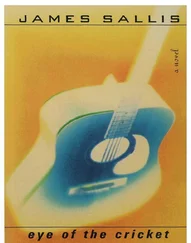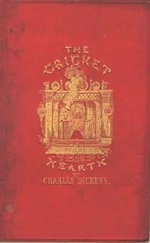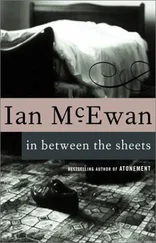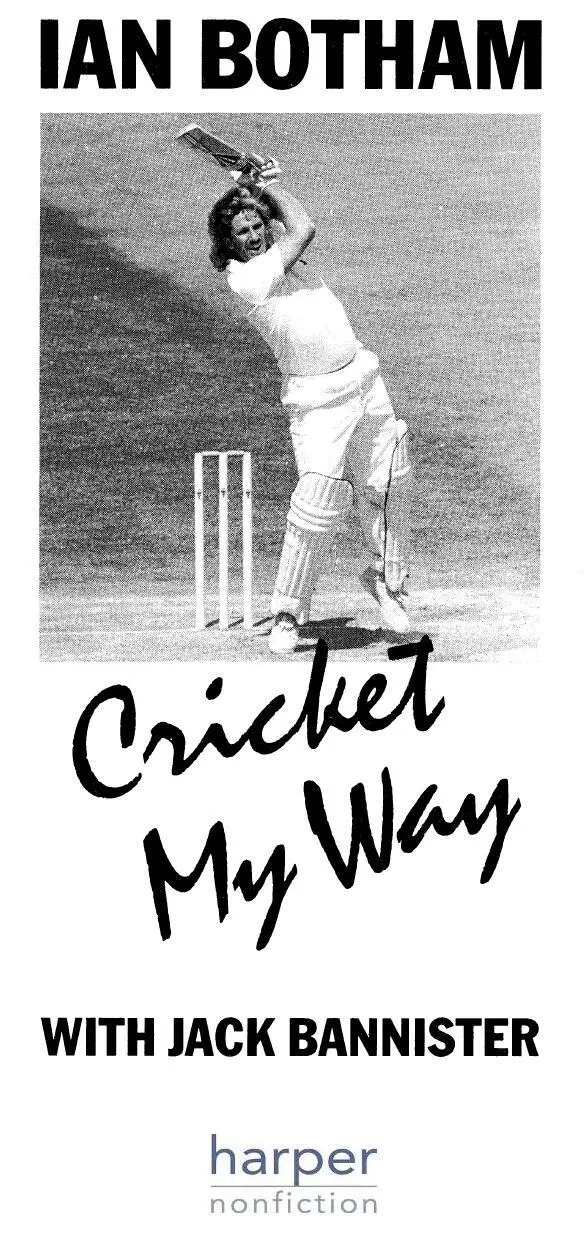
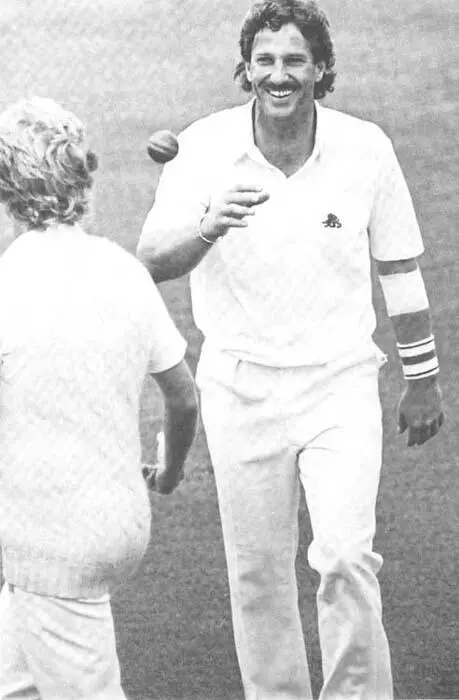
 Copyright
Copyright
HarperNonFiction
A division of HarperCollins Publishers Ltd. 1 London Bridge Street London SE1 9GF www.harpercollins.co.uk
First published in 1989 by William Collins Sons & Co. Ltd
Reprinted 1989, 1990
© Newschoice Ltd and Ian Botham 1989
Photographs courtesy of Adrian Murrell/All-Sport and Patrick Eagar
Illustrations by John Scorey
A catalogue record for this book is available from the British Library
Some images were not available for the electronic edition
The Author asserts the moral right to be identified as the author of this work
A catalogue record for this book is available from the British Library
All rights reserved under International and Pan-American Copyright Conventions. By payment of the required fees, you have been granted the non-exclusive, non-transferable right to access and read the text of this ebook on-screen. No part of this text may be reproduced, transmitted, down-loaded, decompiled, reverse engineered, or stored in or introduced into any information storage and retrieval system, in any form or by any means, whether electronic or mechanical, now known or hereinafter invented, without the express written permission of HarperCollins ebooks
HarperCollins Publishers has made every reasonable effort to ensure that any picture content and written content in this ebook has been included or removed in accordance with the contractual and technological constraints in operation at the time of publication
Source ISBN: 9780002183153
Ebook Edition © JANUARY 2017 ISBN: 9780007513086
Version: 2017-01-18
Title Page
Copyright
Preface
Part One: How I Play My Cricket
Part Two: Batting
1. Holding The Bat
2. The Start Of An Innings And How to Build It
3. The Classic Shots
4. How I Play Slow Bowling
5. Unorthodox Strokes
6. Defensive Batting
Part Three: Bowling
1. Bowling Techniques – An Introduction
2. Held Placings
3. Seam Bowling
4. Slow Bowling
5. Bowling to Left-Handers
Part Four: Fielding
1. Approach
2. Wicket-Keepers
Part Five: Captaincy
1. Honesty
2. Dealing with Pressure
3. Dealing with Players
4. One-Day Matches
Part Six: General Knowledge
1. Why I Play The Game The Way I Do
2. Final Message
Keep Reading
Index
About the Author
About the Publisher
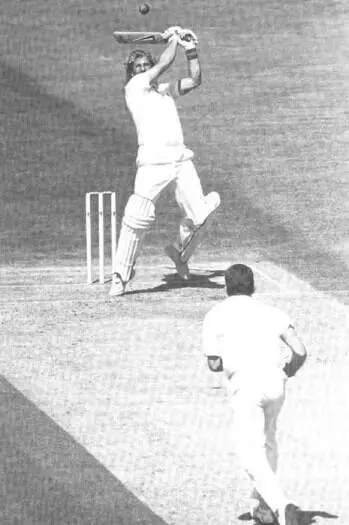
‘Give me a challenge and I’ll take it on.’ In this instance against the Australians – perhaps my favourite opponents.
The Headingley electronic scoreboard of 18 July 1981 flashed that historic bookmaking quotation of 500–1 against England beating Australia – and that is why I am writing this book. Not just to re-hash that famous England win, but to try to explain to all cricketers why they should never ever accept the result of any match as a foregone conclusion.
Cricket is just not like that, and although that Test match provided a once-in-a-lifetime fairy story ending, I have played in plenty of other matches where a game has suddenly been tilted unexpectedly because one player had the guts to attack against all the odds.
My approach to cricket is simple. Give me a challenge and I’ll take it on. If there’s no challenge, then I try to find one. I know my strengths – and weaknesses – and I have always set goals for myself from school right through to Test cricket. And when I’ve achieved something I set out to do, I immediately re-set the goalposts. That is the best way I know to sustain enthusiasm, and no matter at what level you play the game, there is so much more fun to be got out of cricket, if you give yourself something really demanding to aim at.
Never mind if you fail. Part of the point of sport is that there are winners and losers. What you have to do is to convince yourself that you are going to be a winner more often than not, and you’ll be surprised at what sometimes happens. In this book I shall try to explain the correct technical approach to every part of the game – batting, bowling, fielding, wicketkeeping, captaincy – but my main message will be much more fundamental.
The real basis of any cricketer’s success has got to be attitude, and I want to show how properly used aggression can help any player in the world.
From my early schooldays at Milford Junior School and Bucklers Mead School, I decided I wanted to be the best, and so I had to think, talk and play like the best. I am naturally aggressive – in fact, my whole way of life is based on aggression, mostly I hope of the right sort.
Like lots of kids, I wanted to bat and bowl so that I was always in the game, but most allrounders soon decide that is too much like hard work and so become batsmen who bowl, or the other way around. But by sticking at it, I gave myself the extra opportunity to be centre stage throughout a match with two strings to my bow.
The first actual coaching I remember was from a teacher, Ken Hibbert, when I was about eight or nine. It was all to do with the grip, and after all – just like golf – if you get the grip right you’ve got chances. Get it wrong, and just forget it, because it will lead to a repetition of basic errors which will prevent any consistent success.
Like every part of cricket, the best is the simplest. The bat was laid down in front of me, and I was told to pick it up as though I was going to chop a piece of wood. Instinctively my hands came together. That is, quite simply, the most important tip of all to any young batsman. It doesn’t really matter whether the hands are at the top or the bottom of the handle, as long as they are together.
I soon found I could hit the ball hard and often, and even when I came into contact with my first county cricketers, nobody tried to alter my basics – simply because they were correct.
When I was about 11, Dad captained the Westlands 2nd XI – after playing a lot for the first team – and I used to travel with him. When certain guys used to go to the Taunton nets, I went with them, and I well remember Kenny Palmer there. He used to spend a lot of time encouraging me in a net by dragging me off on my own and throwing a few balls to me. I think he had a soft spot for me, and in fact he still does.
Remember the scene at Headingley against Pakistan in 1987 after their wicket-keeper Salim Youssuf claimed that ‘catch’. Kenny was at point and came in like the speed of light to defuse what could have been quite an incident. I like to think he did that because he knows I have always tried to play the game in the right way – but more of that later.
So it was Dad, Ken Hibbert and Ken Palmer early on, and then Harry Sharpe, Tom Cartwright and Brian Close later, who were the main influences on my career. I still ring Tom up, because he taught me all the basics in bowling, when not many people saw anything in me in that department. For instance, when I went on to the Lord’s Ground Staff in 1972 at the age of 16, their attitude was that I was only a batsman. Harry Sharpe thought I might be a bowler, but Len Muncer didn’t.
Читать дальше
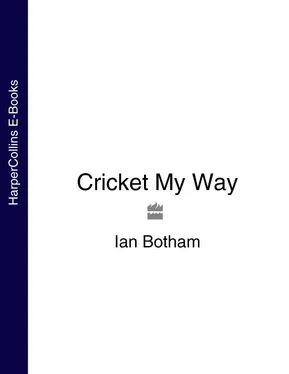


 Copyright
Copyright
